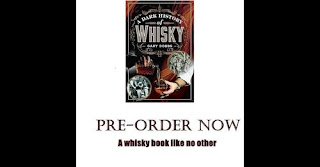"One of the most vapid and infantile forms of art ever conceived by the
brain of a Hollywood film producer." ...Dwight Macdonald, The
Miscellany 1929
"The western remains, I suppose, America's distinctive contribution to the film."...Arthur Schlesinger Jr, Show April 1963



Geographically and historically the concept of "The West" is very
loosely defined, when associated with the literary and film genre of the
western. With the possible exception of the Eastern Seaboard almost
every part of the USA had been called "The West" at some stage in the
country's history.
The
federal government defines "The West" as including the following
states: Alaska, Arizona, California, Hawaii, Idaho, Montana, Nevada,New
Mexico, Oregon, Utah, Washington and Wyoming. But from the movies and
books both Kansas and Nebraska can be added. And maybe Hawaii and
Washington should be removed. The West of popular imagination usually
contains those areas associated with the final frontiers of American
settlement - anything West of the Mississippi River. An area associated
with cowboys, Indians, outlaws and lone lawmen.
Amongst the
earliest western literature with artistic merit were the works of James
Fennimore Cooper, his most famous works being 1826's Last of the
Mohicans - though by the true definition of the genre none of the
author's works are strictly westerns. The books were set in colonial
America and featured the British rule but true westerns are set in
independent America.
EZC Judson, writing under the pen name Ned
Buntline was an early writer of traditional westerns. He earned himself
the nickname of, 'Father of the Dime Novel' and turned Buffalo Bill into
a figure of mythic proportions. However the first western with the
classic ingredients was Owen Wister's The Virginian in 1902, which
largely invented the guidelines that western writers still follow today.
The
names Louis L'amour and Zane Grey have dominated the genre for many
years and still do to some extent. But an early European champion of the
genre was Karl May with his popular Shatterhand books. He wrote over 60
books but Shatterhand remains his most famous character. Indeed Shatterhand
was revived by B.J. Holmes in a series of books for the successful UK
western house, Black Horse Westerns.
The cinema has always had a
love affair with the western and during the silent era there were many
hundreds of westerns made. Most of these have been lost but
there are still some prime examples of early westerns to be sought out
by fans.
Some of the most important silent westerns that still
exist and can be found on DVD or in many cases for free download from
archive.org include:
The Iron Horse (1924) directed by John Ford
The Covered Wagon (1923) directed by James Cruze
Battle of Elderbush Gulch (1914) directed by D W Griffith
In
cinematic terms there is little doubt that the Golden Age of the
western took place between the years 1940 - 1970. There were many
classics before and since but during these years there was never a time
when most major studios didn't have at least one western in production.
During
the Fifties and Sixties in particular the western also dominated the
small screen with many western TV series being aired. Among the most
well known are:
Bonanza
Gunsmoke
The Big Country
The Virginian
The Rifleman
Have Gun will Travel
Wyatt Earp
Wanted Dead or Alive

The
modern era has also seen many classics of the genre, both on the screen
and between the covers - Lonesome Dove, Sons of Texas, Blood Meridian,
Tombstone, The Unforgiven to name but a few. And of course in recent
years we've seen the Coen's re-make of True Grit, Django Unchained and
The Hateful Eight. Those though are just the tip of the hay bale - for
instance check out the excellent Netflix westerns series, Godless.
The
Western truly is
THE GENRE TOO TOUGH TO DIE. Kevin Costner is working on a new western
and there is a remake of Butch and Sundance in the works.
American greats like Dusty Richards and Larry McMurtry continue to
write quality western works. And British western house,
Black Horse Westerns are continuing to bring out new western fiction
written by writers from all over the world. Among these you will find
such loved writers as B. J. Holmes, Ben Bridges, Jack
Giles,Nik Morton, Ian Parnham, Mathew P. Mayo, Chap O'Keefe, Jim
Lawless and
myself, Jack Martin. And this is just a
small selection of the writers producing all new traditional westerns
under The Black Horse banner. And of course there is the story of John
Locke who became the worlds' first self published writer to sell a
million eBooks on Amazon, and several of his titles are westerns. Mind
you Locke was recently discredited when it emerged that he had paid for
many positive reviews which helped sell his books.

Westerns have also made the transition to eBooks and the excellent
publishing house,
Piccadilly Publishing
is reissuing western classics in
the new electronic format, and of course the popular Edge series is
also available in eBook. The Edge books, for instance, are a particular
favorite of mine and I am proud to say that I was instrumental in
initially bring the series to eBooks, but the reissue program is now in
the industrious hands of
Malcolm Davy.
So if you've never tried a western then maybe now is the time to do -
they've never been so easily available and online giant Amazon has many
titles at good prices.
Come on saddle up and let's ride.
Take a look at my Jack Martin page at Amazon - click HERE

















































